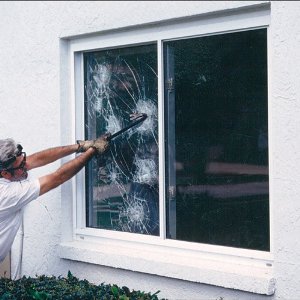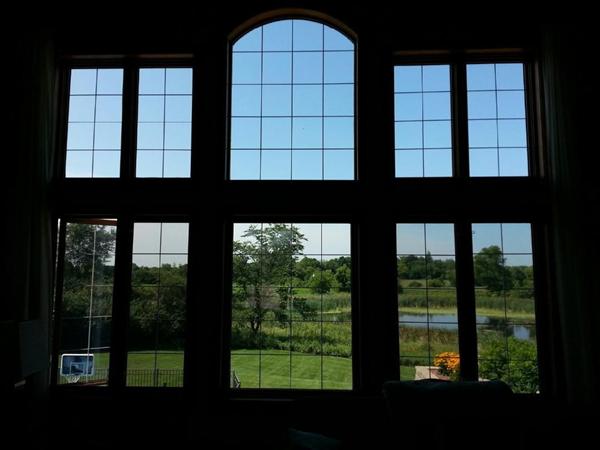Fragment Retention Window Film is a specialized type of window film that is designed to help protect buildings and their occupants from the dangers of shattered glass. This film is made from a solid yet flexible polymer material that bonds to the surface of windows and glass doors to create a durable barrier. When applied to windows and doors, Fragment Retention Window Film helps to retain shattered glass fragments in the event of breakage, reducing the risk of injury and property damage.
What is Fragment Retention Window Film?
Fragment Retention Window Film is a transparent, adhesive film applied directly to the surface of windows and glass doors. The film is composed of a solid yet flexible polymer material that bonds to the glass to create a durable barrier. Unlike other types of window film, Fragment Retention Window Film is specifically designed to help retain shattered glass fragments in the event of breakage.
How does Fragment Retention Window Film work?
To install Fragment Retention Window Film, the film is first carefully measured and cut to fit the exact dimensions of the window or glass surface. The film is then applied using a unique adhesive that bonds it securely to the glass. The adhesive creates a strong bond between the film and the glass, helping to keep the film in place even under extreme conditions.
Once the film is installed, it holds shattered glass fragments in place in case of breakage. This helps to prevent the shards from spreading and causing injury or damage. The film also helps to keep the glass in place, providing additional protection against storms, bomb blasts, and other natural disasters.
Benefits of using Fragment Retention Window Film
There are several benefits to using Fragment Retention Window Film on your windows and glass doors. In addition to increased safety and security, this type of film also offers the following benefits:
- Protection against damage from storms, bomb blasts, and other natural disasters: The solid adhesive bond between the film and the glass helps to keep the glass in place, even under extreme conditions. This can help to prevent damage from high winds, hail, and other natural disasters.
- Energy efficiency: Fragment Retention Window Film can help to reduce the amount of heat that is transmitted through windows and glass doors. This can help to keep your home or office cooler in the summer and warmer in the winter, reducing your energy usage and saving you money on utility bills.
- UV protection: Fragment Retention Window Film can block up to 99% of harmful UV rays, helping to protect your furniture, carpets, and other belongings from fading and discoloration.
Types of Fragment Retention Window Film
Fragment Retention Window Film is available in a variety of styles and patterns, including:
- Transparent, adhesive-backed films: These films are clear and unobtrusive, providing a layer of protection without changing the appearance of the window.
- Static-cling films: These films are easy to install and remove and can be used on a temporary or semi-permanent basis.
- Decorative films with patterned or stained glass designs: These films add a decorative touch to windows and doors and can be customized with a variety of patterns and designs.
In addition to these options, some manufacturers also offer customization options, such as different thicknesses and levels of adhesive strength, to suit the specific needs of each application.
Where can Fragment Retention Window Film be used?
Fragment Retention Window Film can be used on a wide range of windows and glass surfaces, including residential and commercial buildings. Some examples of specific windows and doors where this film can be installed include:
- Sliding glass doors
- Picture windows
- French doors
- Skylights
- Storefront windows
Fragment Retention Window Film can also be used on decorative or specialty glass windows, such as stained glass, leaded glass, or frosted glass. Additionally, some manufacturers offer window films with additional features, such as solar control, energy efficiency, UV protection, and fade resistance, to provide even more benefits for buildings and their occupants.
Fragment Retention Window Film is a valuable tool for increasing the safety and security of buildings and their occupants. This specialized film helps to retain shattered glass fragments, protecting against injury and damage from storms, bomb blasts, and other natural disasters. In addition to its safety benefits, Fragment Retention Window Film can also help to reduce energy usage and protect furnishings from UV damage. If you want to enhance the safety and security of your windows and glass surfaces, consider using Fragment Retention Window Film.

 If you’re looking for ways to improve your home at a low cost, then you should consider upgrading your windows with the use of window tinting. Window tinting involves the application of a film to the glass on
If you’re looking for ways to improve your home at a low cost, then you should consider upgrading your windows with the use of window tinting. Window tinting involves the application of a film to the glass on  Over the past decade, window film has seen some dramatic improvements – not only to its strength and versatility but also to its affordability. In fact, it is now one of the considered an integral part of both interior and exterior windows in most
Over the past decade, window film has seen some dramatic improvements – not only to its strength and versatility but also to its affordability. In fact, it is now one of the considered an integral part of both interior and exterior windows in most  Window tinting might have made an excellent beginning in the automotive industry, but as fabrication evolves, it’s become increasingly useful in residential homes. Tints of today can block glare to prevent
Window tinting might have made an excellent beginning in the automotive industry, but as fabrication evolves, it’s become increasingly useful in residential homes. Tints of today can block glare to prevent 


 Earthquakes are a concern for you if you live anywhere on the West Coast – particularly because of the San Andreas Fault and the lines that radiate throughout that region. Although there are certain building codes that have emerged in recent decades to ensure that structures handle the stress better; windows are still generally considered to be the weak link.
Earthquakes are a concern for you if you live anywhere on the West Coast – particularly because of the San Andreas Fault and the lines that radiate throughout that region. Although there are certain building codes that have emerged in recent decades to ensure that structures handle the stress better; windows are still generally considered to be the weak link. The idea of a bright, sun-drenched home has great appeal for most of us. However, depending on your climate, the direction in which your home is oriented, and how dense or how sparse your property’s shade covering is, too much of a good thing can be, well, too much. There will be times when you need to cut back on the amount of sunlight penetrating your home. Window tinting, also known as window film, is one cost-effective way to do just that.
The idea of a bright, sun-drenched home has great appeal for most of us. However, depending on your climate, the direction in which your home is oriented, and how dense or how sparse your property’s shade covering is, too much of a good thing can be, well, too much. There will be times when you need to cut back on the amount of sunlight penetrating your home. Window tinting, also known as window film, is one cost-effective way to do just that. While it’s certainly possible to purchase window film and install it on your own, the benefits of hiring a professional to install your film should not be underestimated. Unless you’re extremely cautious, informed, well-equipped, and willing to do it all again down the line, you’re going to see a lot of major and minor advantages by leaving the task to professionals.
While it’s certainly possible to purchase window film and install it on your own, the benefits of hiring a professional to install your film should not be underestimated. Unless you’re extremely cautious, informed, well-equipped, and willing to do it all again down the line, you’re going to see a lot of major and minor advantages by leaving the task to professionals.